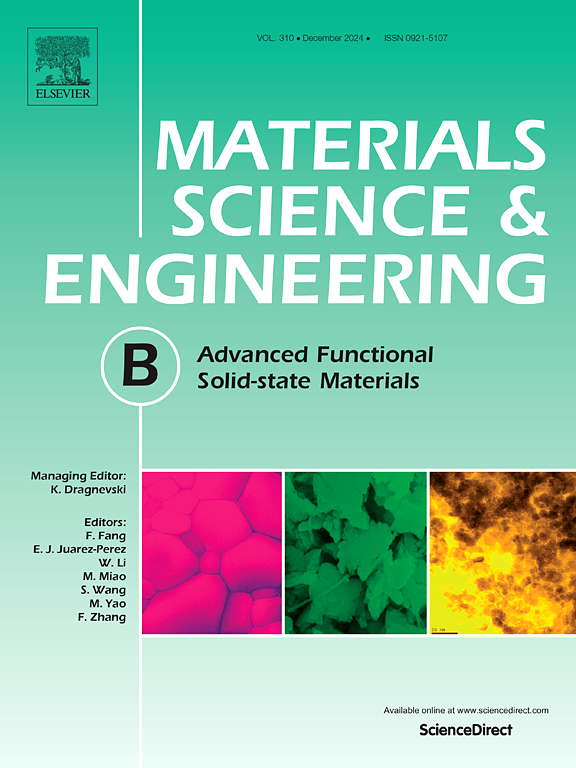Photocatalytic properties of nanostructured g-C3N4 hollow microspheres decorated with OH-CQDs
IF 3.9
3区 材料科学
Q2 MATERIALS SCIENCE, MULTIDISCIPLINARY
引用次数: 0
Abstract
Hydroxylated carbon quantum dots (OH-CQDs) modified g-C3N4 hollow microspheres were prepared using a supramolecular precursor self-assembly method. The incorporation of OH-CQDs into the precursor resulted in the formation of a hollow flower-like microsphere structure composed of g-C3N4 nanoflakes in the final samples, which exhibited a morphology that was roughly inherited from that of the supramolecular precursor. The incorporation of an optimal quantity of OH-CQDs did not result in a deterioration of the g-C3N4 product morphology; rather, it led to an enhancement in its microsphere structure. The modified nanostructure of g-C3N4 resulted in a significant increase in reaction sites and promoted the adsorption of organic dye molecules on the surface of the g-C3N4 photocatalyst during degradation reactions. Furthermore, despite the reduction in carrier concentration of g-C3N4 resulting from the decoration with OH-CQDs, the impedance was significantly diminished and the photocurrent density was also markedly improved. It can thus be concluded that the decoration of OH-CQDs has significantly enhanced the mobility of g-C3N4, thereby contributing to the improvement of the photocatalytic performance of the g-C3N4 photocatalyst.

求助全文
约1分钟内获得全文
求助全文
来源期刊

Materials Science and Engineering: B
工程技术-材料科学:综合
CiteScore
5.60
自引率
2.80%
发文量
481
审稿时长
3.5 months
期刊介绍:
The journal provides an international medium for the publication of theoretical and experimental studies and reviews related to the electronic, electrochemical, ionic, magnetic, optical, and biosensing properties of solid state materials in bulk, thin film and particulate forms. Papers dealing with synthesis, processing, characterization, structure, physical properties and computational aspects of nano-crystalline, crystalline, amorphous and glassy forms of ceramics, semiconductors, layered insertion compounds, low-dimensional compounds and systems, fast-ion conductors, polymers and dielectrics are viewed as suitable for publication. Articles focused on nano-structured aspects of these advanced solid-state materials will also be considered suitable.
 求助内容:
求助内容: 应助结果提醒方式:
应助结果提醒方式:


